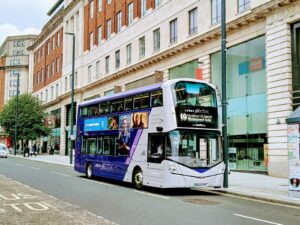Gina is Part 2 Architectural Assistant, Boyer (part of Leaders Romans Group)
It was only a few months ago, in June, that Active Travel England (ATE) was made a statutory consultee on planning applications for new residential schemes – an encouraging move towards prioritising healthy living and a net zero.
But that was before the issue apparently swung the Uxbridge and Ruislip byelection; the Prime Minister announced, ‘I am on motorists’ side’ and ordered review of ‘anti-car’ schemes, recently culminating in an amendment to the Levelling Up and Regeneration Bill to allow local authorities to opt out of future road charging schemes.
The result is a very direct and damaging pitting of motorists against cyclists and has thrown the usually uncontroversial topic of active travel into the political spotlight.
The government should be challenging the system that locks in car dependence due to a lack of public transport or safe cycling and pedestrian routes. But instead, Mr Sunak said: ‘The vast majority of people in the country use their cars to get around and are dependent on their cars.’
Where the evidence for this statement comes from is unclear. And there is plenty of evidence-based research out there which contradicts Sunak’s statement. Evidence shows that quieter streets with less traffic are overwhelmingly popular, and support for this increases once schemes have been implemented and people see the benefits. This is backed up by research from Cycling UK. Given the cost-saving advantages, this knowledge should be welcomed by local authorities and central government alike.
In Denmark economic analysis is a mandatory decision-making tool for all major infrastructure projects funded by the State. The Danish Ministry of Transport follows a manual for the delivery of economic analysis in the transport area, calculating the cost-benefits of cycling infrastructure and cycling measures. Its analysis states that society gains DKK 4.79 (€0.64) per kilometre cycled, primarily due to the large health benefit, whereas it costs society DKK 5.29 (€0.71) for every kilometre driven by car. This means that the economic cost of cycling is much lower than the cost of car transport (if the car contains fewer than two passengers). On the basis of these figures, Denmark saves 10 DKK per kilometre when people cycle rather than drive.
Copenhagen is a city which has changed dramatically over the past 40 years. It used to be dominated by cars but now citizens mostly move around on bicycles or on foot. Evidence shows that when cycling and pedestrian infrastructure is provided, more people use it. However, people did not agree with this change immediately in Copenhagen. The argument was that it did not fit with Danish culture: ‘We are not Italians!’ was the slogan. The obvious lack in Copenhagen of the kind of urban culture that can be found in the Mediterranean, where people meet, stand talking, and sit outside restaurants, was evident.
Could the same 1960s mindset in Denmark at the time apply to our current British politicians over 60 years later?
A UK-based success story, initiated by Scandinavian design consultancy firm Gehl Architects and landscape architects Landscape Projects led behavioural change towards walking and cycling in New Road, Brighton. When the scheme was commissioned by Brighton and Hove City Council, New Road had become run-down and was dominated by the needs of vehicles rather than people. Using data and analysing the urban structure, movement patterns, and open-air activities to provide advice on improvement, the redesign prioritises pedestrians and cyclists and promotes driving at low speeds. Drivers are transitioned to the street across a textured rumbled strip, whilst the surface is carefully detailed to hint at how people should arrange themselves.
Since its opening, traffic levels in the street have dropped by 93%, whilst cycling and pedestrian numbers have risen by 22% and 162% respectively. In addition, there was an increase of 600% in lingering activities, which has resulted in an increased contribution to the city’s economy, and 86% of residents in Brighton would like to see this elsewhere.
Recently I attended a seminar with Active Travel England and former racing cyclist and gold medallist Chris Boardman. Chris Boardman explained the new role of ATE seeks to help planning authorities to deliver good active travel designs for developments over 150 units. ATE has produced several resources and advice notes, which were the most viewed elements of the DfT website in the week following their release. There is significant interest in this topic, including the over 4.2 million people using National Cycle Network in which ATE funds.
Returning to Rishi Sunak’s statement, perhaps the most ironic aspect is that it actively goes against recent evidence-based research. It’s hard to argue with the many statistics that show the benefits of active travel. And it is a pity that the Government does not take an evidence-based approach – in place of the reactive, populist decisions – when determining issues as important as health, wellbeing, community safety and clean air.
Sixty years ago, the people of Copenhagen thought that their climate and culture was not Mediterranean enough to facilitate active travel and café culture. Now Scandinavia is renowned for both. And so, if Copenhagen, with an average annual temperature of 8.9C can achieve this, so can the UK.
Gina is an Architectural Assistant at Boyer’s Design Team, with experience in the fields of masterplanning, urban design and community consultation. Gina completed her Masters in Architecture at the University of Reading and is working towards applying for Chartered membership of the RIBA.

















Leave a Reply